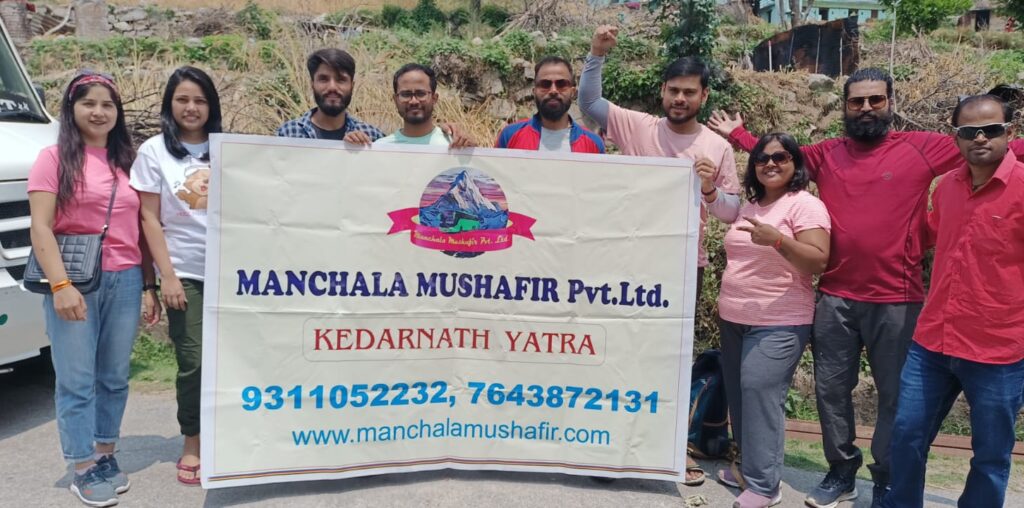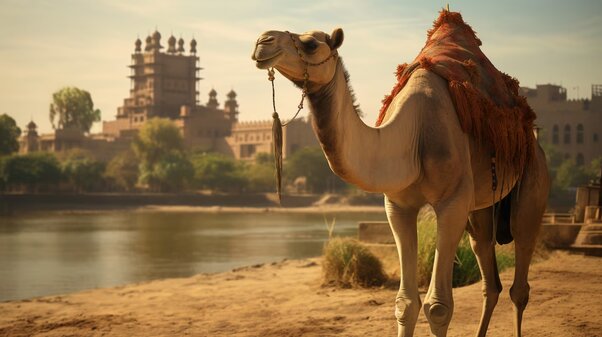Introduction
Kedarnath is more than a place, it’s a pilgrimage of the soul which takes you to Kedarnath temple, dedicated to lord Shiva. One of the famous Char Dham Yatra, the most sacred destinations of India, this historic Shiva temple attracts thousands of devotees to seek inner peace in the majestic mountains and the chants of the Mandakini River. But the Kedarnath trek is not only a test of faith but also a devotional experience and a marvel. It’s a tough 16 km climb from Gaurikund to 3583 meters, with steep trails, including unpredictable weather, and thin air. But at every turn you are rewarded with raw Himalayan beauty: green valleys, glaciers and dawn views of the Kedarnath Temple standing as if a monument against time. Beyond the physical hardships, the trail is a tale of dedication, where nature forces you to look inward. Prepare to unfold challenges, witness pristine beauty and recover parts of your soul left behind in Kedarnath’s timeless solitude.
The Kedarnath Trek: An Overview
The Kedarnath Trek through the Garhwal Himalayas in Uttarakhand starts from Gaurikund and leads trekkers along the banks of Mandakini River to a sacred Hindu shrine – Kedarnath Temple. The 16-18 km trek begins from 1,982 meters to 3,583 meters, a challenging yet soul-stirring pilgrimage through rocky paths and steep gradients. It can be done by most trekkers in 8 Hours, ponies and palanquins are available (if someone is not used to walking at high altitudes). Besides being a physical trial, the journey exposes the raw beauty of the Himalayas, where faith and nature come together, and every step carries the resonance of ancient devotion.
Challenges of the Kedarnath Trek
Physical Demands: Kedarnath trek demands physical fitness because this trek is 16 Km to 18 Km long which will take you to sacred Kedarnath Temple which is situated at an altitude of 3583 meters. So, you have to prepare yourself well before a month from your trip, by doing exercise like daily walking, brisk walking, running. Normal Weight lifting, Squats, Shoulder, Plank and Yoga in which includes breath exercise. Also while trekking you can face Fatiuegastion and AMS (Acute Mountain Sickness) which is the mountain disease, so you should have tablets of AMS.
Mental Resilience: The Kedarnath trek is not just about physical strength but it is the test of your mind too. Trekking for 6-8 hours on a 16-18 km long trek on a rocky, uneven path can make you exhausted and your body will ache, and sudden weather changes can give you more stress. So, you don’t have your mindset and your stamina lost, you have to keep pushing past your struggle to reach Kedarnath by thinking about why you started this trek.
Beauty Along the Trail
Scenic Landscapes: Kedarnath is filled by stunning and beautiful sights which are created by nature. Kedarnath trek will take you through the lush green valley which is filled by colourful wildflowers, cross cold, and rushing streams of Mandakini river and also you’ll see snow-capped mountains. Even after the 2013 flood, Rambara waterfall looks more Beautiful for which you should visit one time.
Magical Moments: The kedarnath trek will offer you memorable moments like the rising of sun make the temple golden while chilly weather wakes you up. At night, you can get to see countless sparking stars with the glowing milky way. Hearing the wave sound of the mandakini river makes the trek more magical. These calm, quiet, and awe-inspiring moments make you deeply connected with the himalayan mountain. It’s the way of nature which leaves you speechless.
Soulful Finds: Spiritual & Cultural Insights
Kedarnath Temple: Kedarnath Temple is situated at an altitude of 3583 meters which is one of the most sacred temples in India. This temple is dedicated to lord Shiva and one of Panch Kedar and 12 Jyotirlingas which represent lord Shiva. Kedarnath temple was established by Pandavas and re-established by 8th Century philosopher Adi Shankaracharya. Every year lots of people come here to prove their devotion for lord Shiva by completing the 16 Km to 18 Km trek or to feel the aura of ritual.
Encounter with pilgrims: During your trek, you can see pilgrims of all ages like senior citizens, kids laughing, and devotees who are chanting Har Har Mahadev and prayers. Many people share their personal story like how this trek heals their loss, and others to thank god. Some time a exhausted stranger can be offer you snacks or can help to walk up steep trek. Their faith and devotion for kedarnath will inspire you to keep going.
Local Culture: During trek, you will see how good Garhwali culture and this trek lets you experience. Friendly villagers will welcome you with a smile and offer you to try their local dishes like Aloo ke Gutke or sweet singori wrapped in leaves. The traditional wooden home of garhwali people and folk songs about mountains, and folk songs about mountains, and festivals like harela will show you the deep love for their land. They are simple people who will offer you a cup of tea and share a story, making you feel like you are a member of their community. Here, culture is Kindness.
Preparation tips for Kedarnath Trek
Preparing for the Kedarnath trek? Start by training your body! Join some cardio workouts like jogging, cycling or walking fast. If you do not have a chance for those, you can try running or jumping. Use squats or lunges to prep your legs for steep trails. Allocate a day to acclimate — your body adjusts better to high altitudes while resting, and you’re less likely to suffer from altitude sickness.
Pack wisely: trekking shoes for the rocky trails, layered clothing (thermals, fleece, windproof jacket) for unpredictable weather and a raincoat. Walking sticks for steep grades. And don’t forget a first-aid kit, some headache and stomach medicines and a water bottle to stay hydrated. Get to know altitude sickness symptoms such as dizziness or nausea.
Visit: May-June, September-October for clear skies and safer trails. Apply for permits early, and look for registration policies online. With the best preparation though you’ll be marvelling not at blisters but at the beauty of your trek!
Beyond the Trek: Nearby Attractions
After Kedarnath, visit these nearby places! Vasuki Tal, a glacial lake at 4,135 meters, has turquoise waters and Chaukhamba peaks but be prepared for icy winds and steep climbs.
Guptkashi, a peaceful town with ancient Vishwanath Temple where Lord Shiva is said to have hidden. Sonprayag, where Mandakini and Songanga rivers meet, has serene spots for rituals or picnics.
Don’t miss Chorabari Tal (Gandhi Sarovar), a calm lake just 3 km from Kedarnath. Surrounded by snow peaks, it’s where Mahatma Gandhi’s ashes were sprinkled. The short trek here is perfect for quiet time.
These add extra magic to your journey—adventure, spirituality or peace. Each one has a story to tell and make your Kedarnath trip unforgettable!
Conclusion
The Kedarnath Yatra is not just a trek, but an experience that changes your life, tries your body, shocks your eyes and touches your soul. Sure the climbs are tough and steep, hard tasks in cold weather and with tired legs – but the rewards are massive. Just picture greener valleys and snow capped peaks and starry nights feeling like magic! The ancient temple, the warm pilgrims, the kind villagers, they all give you lessons of faith, kindness, and not give up.
There’s no destination on this hike. It’s about discovering the inner self you never knew you had, seeking peace in a landscape that remains unchanged across the eons and being a part of something greater than yourself. Kedarnath imparts memories that stay with you forever, whether you’re praying at the temple, laughing with new friends or just watching the Milky Way.
So if you’re up for blisters, stunning vistas and a trip that will alter the way you approach life — start packing! Kedarnath is not just a place, it is an experience that transforms obstacles into miracles and strangers into family. Let mountains be the things that inspire you one step at a time.



